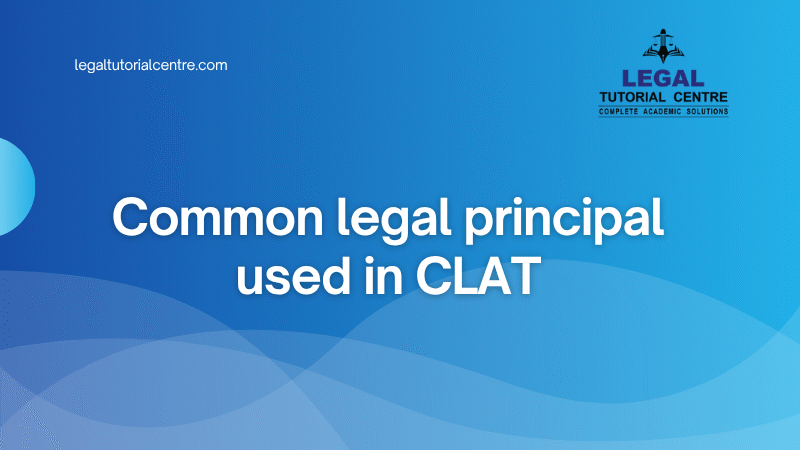Common Legal Principles Used in CLAT (Legal Reasoning Section)
1. Principle of Strict Liability
Definition: A person may be held liable for certain acts even if there was no negligence or intention to cause harm.
Leading Case: Rylands v. Fletcher (1868)
Explanation: If someone brings something dangerous onto their land, and it escapes causing damage, they are strictly liable.
- Principle of Vicarious Liability
Definition: A person is held responsible for the acts of another, typically an employer for the acts of their employee.
Example: If a delivery driver negligently hits someone during work hours, the employer may be liable.
3. Principle of Natural Justice
Definition: Basic procedural fairness in legal matters.
Two Key Rules:
Audi Alteram Partem (Hear the other side)
Nemo Judex in Causa Sua (No one should be a judge in their own case)
Explanation: Everyone must get a fair chance to be heard before a decision is taken.
- Principle of Mens Rea (Guilty Mind)
Definition: A person can only be held criminally liable if they intended to commit the crime.
Example: If someone causes harm accidentally, they may not be criminally liable.
5. Doctrine of Precedent
Definition: Courts follow the decisions made in earlier similar cases (stare decisis).
Explanation: Ensures consistency and predictability in law.
6. Principle of Volenti Non Fit Injuria
Definition: If someone consents to the risk, they cannot later complain of injury.
Example: A boxer injured during a match cannot sue for battery.
Principle of Res Ipsa Loquitur
Meaning: “The thing speaks for itself”
Explanation: Used in torts – when harm wouldn’t normally occur unless someone was negligent.
Example: A patient has a surgical tool left inside after surgery.
8. Principle of Legal Fiction
Definition: Assumption made by law to treat something as true, even if it’s not, for legal purposes.
Example: A company is treated as a “legal person”.
Principle of Burden of Proof
Definition: The obligation to prove one’s claim.
Explanation: In criminal cases, prosecution must prove guilt; in civil cases, plaintiff must prove harm.
10. Principle of Caveat Emptor
Definition: “Let the buyer beware”
Explanation: The buyer must examine the goods and buy at their own risk.
Tips for CLAT Legal Reasoning:
Read principle carefully.
Apply only the given principle, not personal knowledge.
Stick to facts in the question.
Practice daily with mock tests.


